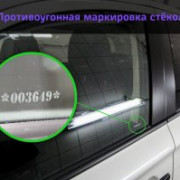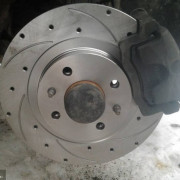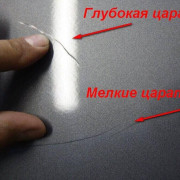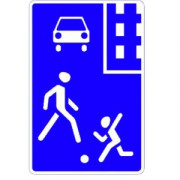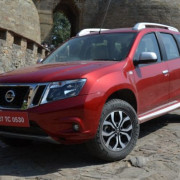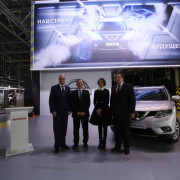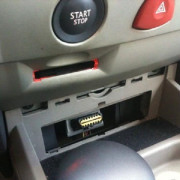Обзор новой bmw 3-й серии g20: способна ли она разогнать реальность? разбираемся в новой «тройке» от бмв
Содержание:
Enjoying the drive once more
Our time in the new 3 Series is split into two sessions: on the road in the 330i and on the track in the M340i xDrive. Though BMW will sell a diesel-powered, 320d version of the car abroad, the U.S. will only have a pick of 2.0-liter four-cylinder and 3.0-liter inline six-cylinder powertrains — both turbocharged, and both available in rear-drive or all-wheel drive configurations. Our sole transmission option is ZF’s latest eight-speed automatic. Yes, enthusiast friends, the only manual-equipped 3 Series will be the forthcoming M3.
The U.S. will only have a pick of 2.0-liter four-cylinder and 3.0-liter inline six-cylinder powertrains.
The loss of a row-your-own gearbox is painful, and a bad omen for all who’d hoped the new 3 Series would re-introduce engagement into the sport sedan’s formula. Fortunately, there’s good news elsewhere in the car’s genetic makeup. The platform is stiffer, the body is approximately 120 pounds lighter (despite growing 1.6 inches in the wheelbase and 3.0 inches overall), the center of gravity is lower, and the front and rear track width has increased.
The sport package suspension is pretty trick as well, with dampers that monitor the compression stroke in the rear and rebound stroke in the front to decide when to add 50 percent more damping force. Both 330i and M340i models are also available with continuously variable dampers. Also part of the 330i’s sport package (and standard on M340i models) is an electronic limited-slip differential, variable ratio steering rack, 13.7-inch front rotors with four-piston calipers, and a 19-inch wheel set.
Miles Branman/Digital Trends
Our romp in the 330i M-Sport along southern Portugal’s near-perfect, twisting back roads showcases the car’s substantial chassis improvements and ride refinement. With unyielding poise, the four-door slings through corners as we work the direct, nicely weighted steering rack. Though light on feedback (a downfall of most electronically assisted systems), the steering is far more agreeable than the F30’s. Increased power and torque (now at 255 horsepower and 295 pound-feet) gives the 330i a bit more urgency, though no more character than its predecessor. And while we miss the engagement of a manual, there isn’t a finer automatic than this new eight-speed. In sport mode, shifts are more than just quick – they’re precisely timed to issue the right gear for peak performance.
Things heat up quickly in the M340i xDrive. Portimao (Algarve International Circuit) is a beast of a track, with a mix of blind, off-camber corners and tricky apexes to trip up even the most competent sports cars (and drivers). The benefits of BMW’s xDrive all-wheel drive system are immediate as we let the M340i get very light over crests and demand power early in corners. Under these circumstances, a rear-drive car must either be patient, or engage in a battle of opposite lock with its driver. The rear-biased xDrive system, meanwhile, allows us to angle the M340i’s butt before the front wheels get a dose of power to claw forward. The transfer of torque to the front wheels is progressive as well, never unsettling the chassis, and (with traction control in Sport) permitting controllable four-wheeled drifts.
Hurtling down the straight, we’re reminded that the M340i makes a hearty 382 hp and 369 lb-ft of torque. We see 150 mph before our lead car (a BMW M2 Competition) hammers the brakes. Good bite and consistent stopping power lets the M340i mimic the M2’s braking zones throughout the track. Speaker-amplified snarl envelops the cabin as we dig into the throttle, but the noise isn’t one we crave. The steering also leaves something to be desired. A tweaked version of the F30’s rack (not the same unit as the new 330i) has residual on-center vagueness that takes some of the fun out of flogging.
Our quibbles with the 330i and M340i pale in comparison to the cars’ effectiveness as sport sedans. More steering engagement, a better engine note, and a six-speed would weaken our knees, but the four-door coming to market in early 2019 is still a genuine BMW.
Graduated styling, but light on luxury
For most luxury carmakers, the flagship sedan or SUV is the design beacon, with lesser models mimicking its styling cues in one way or another. To some degree, that’s true for BMW: the new X7 and 8 Series press the company’s design forward with more prominent grilles (taller for the SUV and wider for the coupe) and sharper lines. The 3 Series, however, has even greater brand significance, and must share the burden of design leadership.
To resolve the F30’s inconspicuous design, BMW gives its successor a wider stance, a longer, more striking body, and eye-catching light signatures. At the front, the 2019 3 Series gets a three-dimensional grille for the first time, with a crease placed high on the kidney. New LED headlights (standard on all trims) branch from either end of the grille and wrap around the front quarter panel. In Europe, available laser lights add delicate blue details within the headlight housings. The lower fascia design is dependent on the model, with the Luxury, Advantage, and Sport lines adorning T-shaped fog lights and a rounded lower air dam. M Sport variants receive a larger center inlet and faux side vents for a more aggressive look.
In profile, the new 3’s cab-rearward stance, integrated trunk lip, and downturned hood emphasize the sedan’s rear-drive layout. A re-imagined Hofmeister kink is now part of the C-pillar and is bordered by freestanding glass. To break up the car’s longer body and wheelbase, BMW designers added a character line from the rear door handle to the wraparound taillights, and another accent line from the taillights’ lower edge to the bottom of the rear wheel arch. Standard 17-inch and available 18- or 19-inch wheel designs are wrapped in either Michelin PS4 or PS4S tires.
Sampling the new 3 Series’ tech is a great reminder that BMW is, at the end of the day, a car company.
At the rear, there’s an air of Lexus IS about the new 3 Series’ L-shaped LED taillights, but more noticeable is the car’s departure from predecessor designs. Objectively, the dark shaded light housings, muscular lower fascia (again styled differently for Advantage/Luxury/Sport vs. M-Sport variants), and dual chrome exhaust ports give the new 3 a handsome rump. However, we feel a tinge of nostalgia for classic 3 Series styling.
Inside, the 3 Series is more progressive than ever before. Complex shapes and visual depth catch the eye, but it’s the car’s large center infotainment display and digital gauge cluster that most distinguishes the updated cabin. A hexagonal pattern encompasses the wide-view monitor and digital climate control screen, while the lower portion of the driver-oriented center stack is dedicated to radio presets and a physical volume knob.
Both seat styles are comfortable, with the available M-Sport chairs providing additional support. The available M-Sport steering wheel thickens the rim for a better grip, but even the standard wheel feels excellent. The biggest knock against the new 3’s cabin is the material quality. The gear selector backing is made from rough plastic, some trim pieces look downright gaudy, and the hard plastic lower door panels feel out of place in a luxury sedan.
Despite moving further away from traditional BMW design cues, the new 3 Series is an elegant four-door with an athletic stance.
Throwing tech at the car, seeing what sticks
BMW’s latest convenience and safety technologies broaden the 3 Series’ appeal considerably. A standard 8.8-inch touchscreen infotainment and 5.7-inch TFT monitor can be upgraded to a 10.25-inch monitor and 12.3-inch digital driver display as part of BMW’s live cockpit professional package. The latter setup introduces BMW’s operating system 7.0, with 20 GB of memory, snappy response to inputs, remote software updates, and sharp graphics. Passengers can use the familiar wheel controller, steering wheel buttons, voice commands, or gestures to access the system. It takes some time to adjust to the digital gauge cluster thanks to an inverted tachometer (which revs counter-clockwise), but customization options allow for either a streamlined or an information-dense readout.
Our quibbles with the 330i and M340i pale in comparison to the cars’ effectiveness as sport sedans.
Before our test drive, BMW gives a detailed presentation of its new intelligent personal assistant, which is designed to learn driver preferences and respond to vocal cues. To summon the system, the driver says, “Hey BMW,” followed by a question or comment. For example, telling the assistant you are cold raises the cabin temperature. You can also ask the assistant about any warning messages or for projected range based on remaining fuel. In practice, the system is only modestly helpful. The limitations are two-fold: one, voice commands are consistently misconstrued (future updates could resolve this) and, two, vocal cues are in no way colloquial. Unless your command is phrased precisely according to the system’s vernacular, the assistant won’t comply. We foresee drivers using the assistant once or twice, becoming frustrated, and then never trying it again.
Complementing the available live cockpit pro monitor is an updated head-up display. 70 percent larger than the one in the previous generation 3 Series, the enhanced display shows the car’s speed, speed limits, driver assistance status and warnings, route guidance and telephone and entertainment lists.
Miles Branman/Digital Trends
Driver assistance takes a step forward in the new 3, with a robust set of aids and a couple nifty extras to make life easier. Adaptive cruise control, steering and lane keeping assist, blind spot monitoring with rear cross-traffic alert, and automatic emergency braking are all available and effective. Drivers can keep their hands off the steering wheel for 16-second intervals and need only brush a finger or two against the wheel to reset the timer (which feels like a revelation compared to rivals’ demanding wheel sensors).
The cleverest driver aid available in the 2019 3 Series is BMW’s reversing assistant. At speeds up to 22 mph, the car will cache wheel adjustments from the last 164 feet of forward travel. If a driver ends up in a tight spot and needs to reverse, he or she can activate reversing assistant to back up along exactly the same path they used to get there. Activating the assistant doesn’t require hunting through menus, either: putting the gear selector in reverse pulls up the assistant icon on the center display. Hit the button and the car does the deed flawlessly.
Sampling the new 3 Series’ tech is a great reminder that BMW is, at the end of the day, a car company. Developing a personal assistant to compete with Apple and Google is a doomed endeavor. These technology giants have hoards of employees dedicated to these products, while BMW has a small division. Car-centric features like reversing assistant and driving aids are far more intuitive and useful because BMW can use its experience and expertise to refine them.
